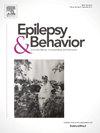在综合卫生保健系统内癫痫中心评估患者的评估时间和特征。
IF 2.3
3区 医学
Q2 BEHAVIORAL SCIENCES
引用次数: 0
摘要
目的:快速患者转诊到癫痫中心可能有助于随后的疾病改善手术和非手术治疗。据报道,在某些情况下,从癫痫诊断到手术评估的延迟时间为15-18年,尽管在综合护理模式中及时转诊符合指南的模式尚不为人所知,但这可能为优化符合指南的获取策略提供信息。方法:我们对2008年1月1日至2023年6月30日在北加州综合医疗保健服务系统(IDS)与4级癫痫中心进行癫痫中心评估的1088例患者进行了回顾性队列研究。使用电子健康记录(EHR)数据,我们总结了从诊断和其他主要护理时间点到癫痫中心首次就诊的时间。采用多变量线性模型评价人口统计学、社会经济和临床特征与首次癫痫中心就诊时间的关系。结果:对于服用任意数量抗癫痫药物的患者,从首次服用抗癫痫药物(ASM)、诊断为癫痫或癫痫发作,到癫痫中心就诊的平均时间分别为3.9年(SD = 4.5)、3.2年(SD = 3.2)和2.7年(SD = 3.2)。在第一次就诊时开了两次或两次以上asm的患者,可以看到类似的时间框架。服用多种抗痉挛药物、诊断为发育迟缓、年龄在40岁及以上的患者到癫痫中心就诊的时间明显更长。在精神合并症患者、公共健康保险患者和传统上服务不足群体的患者中,没有发现到癫痫中心就诊的时间更长。结论:在IDS系统内的癫痫诊所评估的患者在不到4年的时间内进行了诊断和初始治疗,在人口统计学或合并症方面几乎没有差异。未来的研究可以确定特定的卫生系统特征,这些特征是缩短时间框架的关键,以测试可转移的策略,以减少到癫痫中心的时间。本文章由计算机程序翻译,如有差异,请以英文原文为准。
Time to evaluation and characteristics of patients evaluated at epilepsy centers within an integrated health care delivery system
Objective
Rapid patient referral to epilepsy centers may facilitate subsequent disease-modifying surgical and non-surgical treatments. Delays of 15–18 years have been reported from time of epilepsy diagnosis to surgical evaluation in some settings, though patterns for timely guideline-concordant referrals within integrated care models are not well known and could inform strategies for optimizing guideline-concordant access.
Methods
We performed a retrospective cohort study of 1088 patients undergoing epilepsy center evaluation from January 1, 2008 through June 30, 2023 in a Northern California integrated healthcare delivery system (IDS) with a Level 4 Epilepsy Center. Using electronic health record (EHR) data, we summarized time from diagnosis and other major care time points until first visit at the epilepsy center. A multivariate linear model was used to evaluate the relationship of select demographic, socioeconomic, and clinical characteristics with the time to first epilepsy center visit.
Results
The mean times to epilepsy center visit from first prescription of an anti-seizure medication (ASM), diagnosis of epilepsy or seizures, and first visit with a general neurologist, were 3.9 years (SD = 4.5), 3.2 years (SD = 3.2) and 2.7 years (SD = 3.2), respectively, for the full cohort of patients prescribed any number of ASMs. Comparable time frames were seen for patients prescribed two or more ASMs at the time of first visit. Significantly longer time to epilepsy center visit was seen in patients with multiple ASMs prescribed, a concordant diagnosis of developmental delay, and those age 40 and above. Longer times to epilepsy center visit were not seen among patients with psychiatric comorbidities, public health insurance coverage, and among patients in traditionally underserved groups.
Conclusions
Patients evaluated at an epilepsy clinic within an IDS system did so within less than four years of diagnosis and initial treatment, with few disparities by demographics or comorbidities. Future studies can identify specific health system features that are key to shorter time frames to test transferable strategies to reduce time to epilepsy centers.
求助全文
通过发布文献求助,成功后即可免费获取论文全文。
去求助
来源期刊

Epilepsy & Behavior
医学-行为科学
CiteScore
5.40
自引率
15.40%
发文量
385
审稿时长
43 days
期刊介绍:
Epilepsy & Behavior is the fastest-growing international journal uniquely devoted to the rapid dissemination of the most current information available on the behavioral aspects of seizures and epilepsy.
Epilepsy & Behavior presents original peer-reviewed articles based on laboratory and clinical research. Topics are drawn from a variety of fields, including clinical neurology, neurosurgery, neuropsychiatry, neuropsychology, neurophysiology, neuropharmacology, and neuroimaging.
From September 2012 Epilepsy & Behavior stopped accepting Case Reports for publication in the journal. From this date authors who submit to Epilepsy & Behavior will be offered a transfer or asked to resubmit their Case Reports to its new sister journal, Epilepsy & Behavior Case Reports.
 求助内容:
求助内容: 应助结果提醒方式:
应助结果提醒方式:


